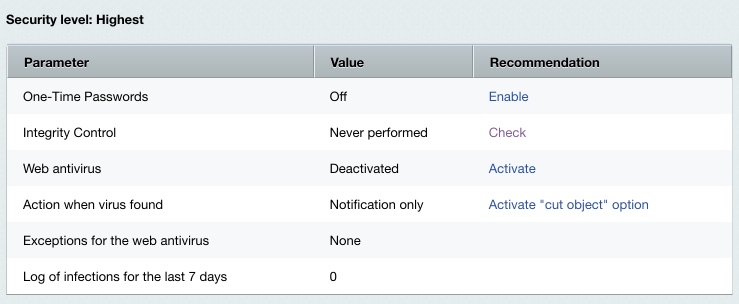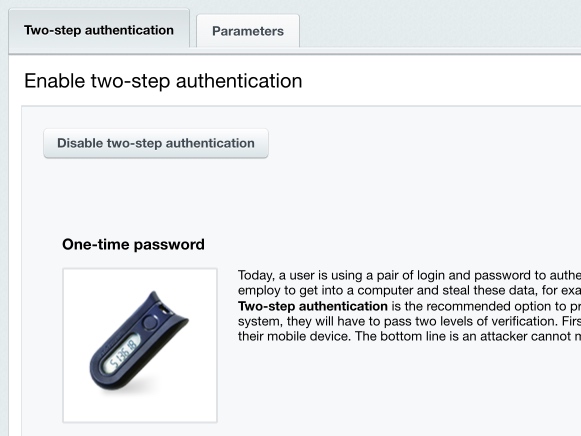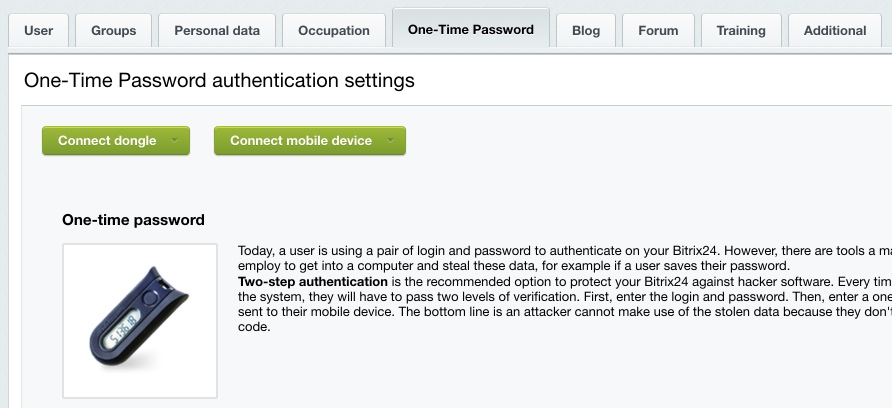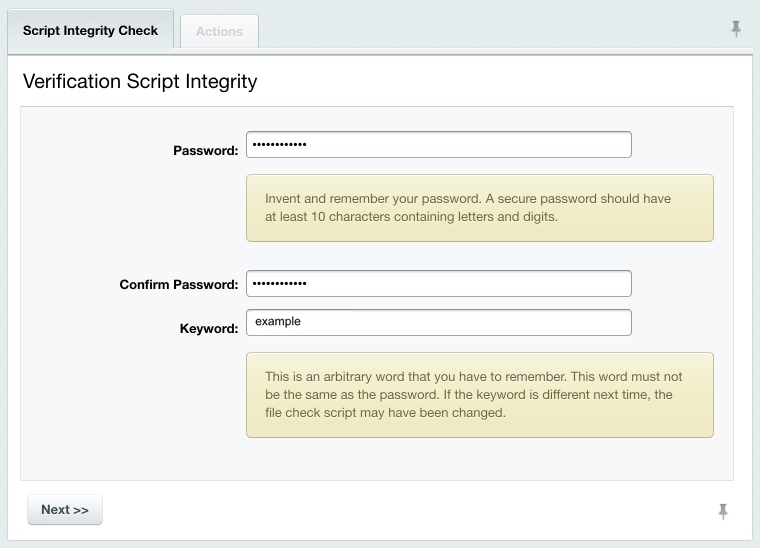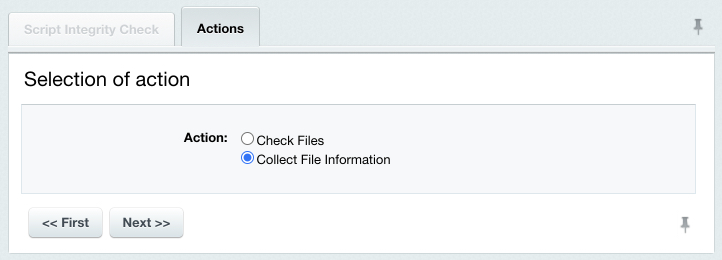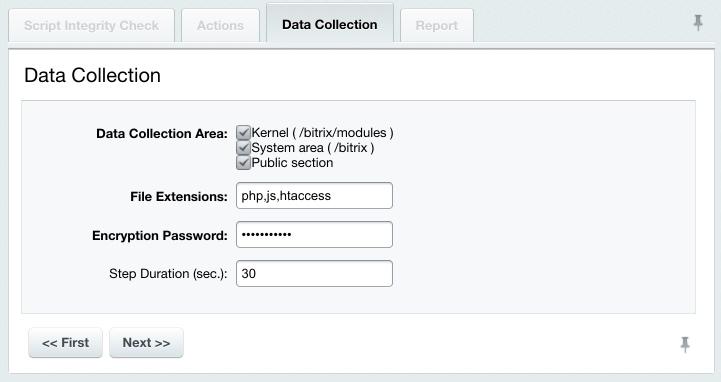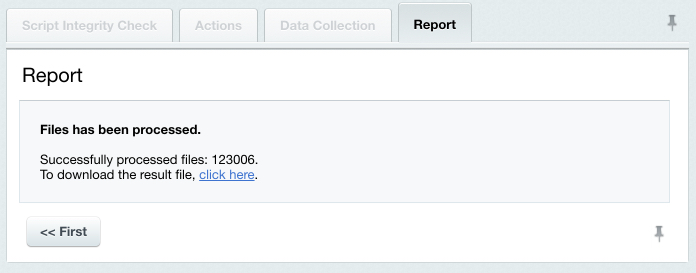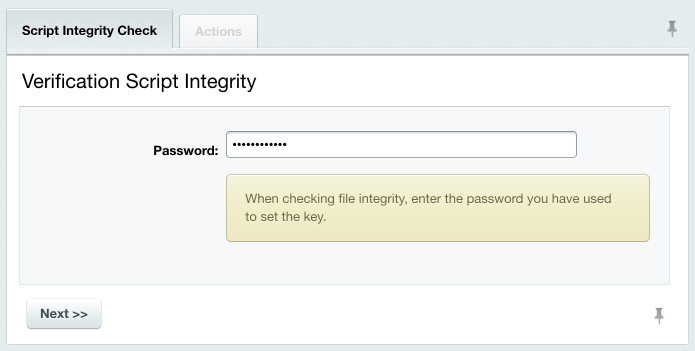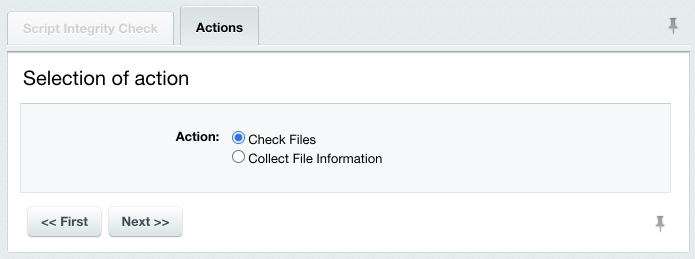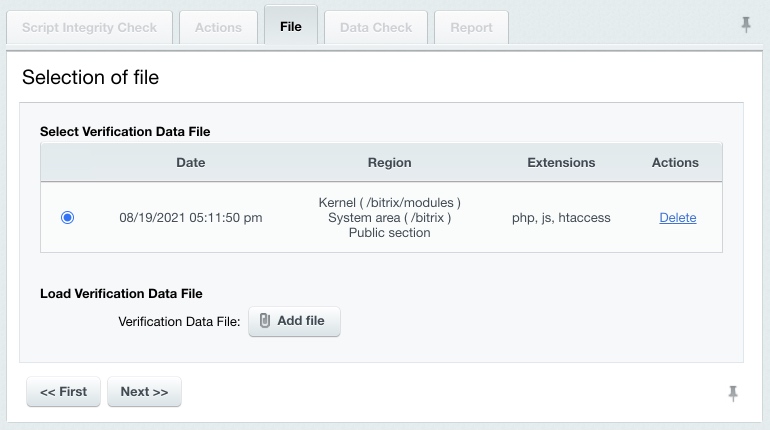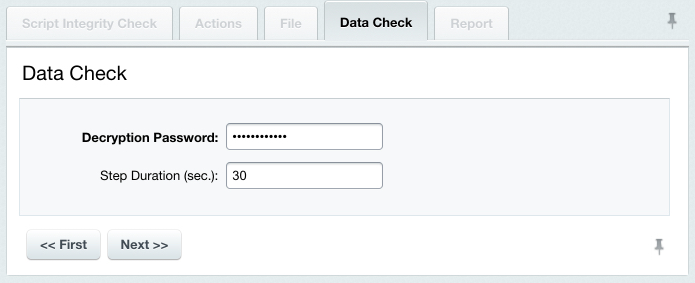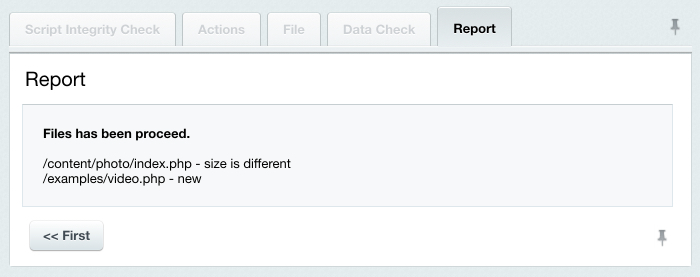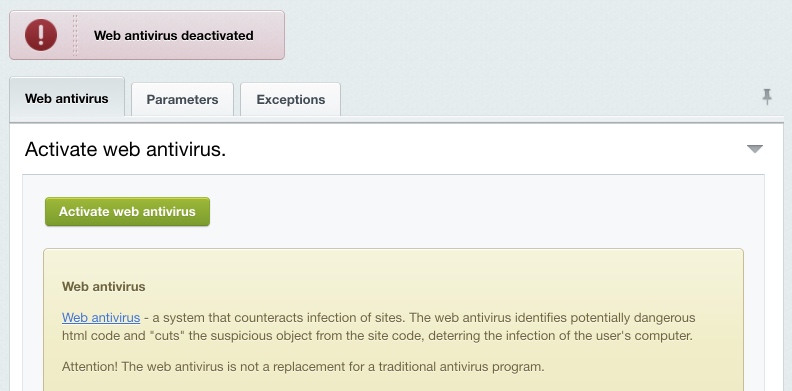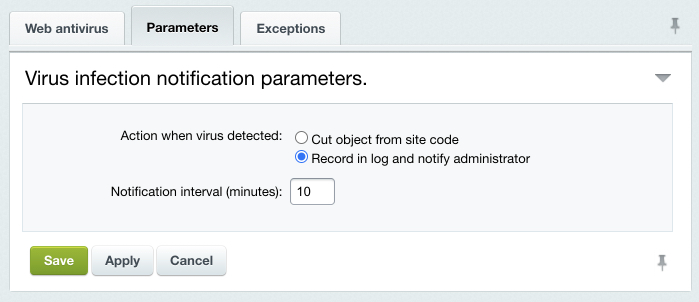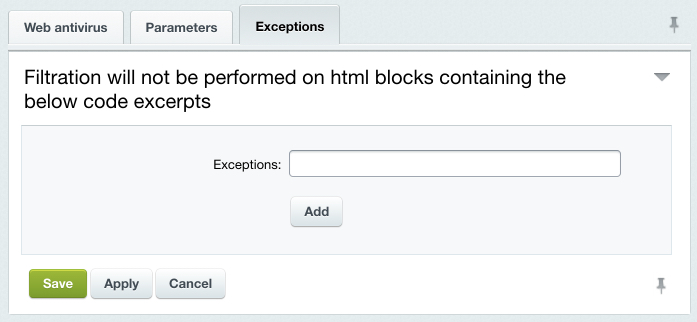Last Modified: 04.10.2024
|
|
|
Views: 18949
Last Modified: 04.10.2024 Remember that you first have to configure the parameters of the standard and high levels prior to configuring the highest protection:
Note: if at least one parameter of the highest protection level takes an invalid value, the protection level whose parameters are completely configured takes effect with respect to parameters of other protection levels.
One-Time PasswordsThe concept of one-time passwords empowers the standard authorization scheme and significantly reinforces the web project security. The one-time password system requires a physical hardware token (device) or special OTP software. These passwords are especially recommended for use by the site administrators since they significantly improve security of the “Administrators” user group. Note. You have to enable the one-time password system for the site to be protected at the highest protection level.
You can enable (or disable) one-time passwords on the Settings > Proactive Protection > Two-step authentication form by clicking Enable one-time passwords (or Disable one-time passwords).
For the one-time password scheme, a corresponding tab is shown in the user profile form. The one-time password mechanism is configured for each user individually.
Integrity ControlThe File integrity control form (Settings > Proactive Protection > Integrity Control) serves to check the integrity of the system kernel, system area and public files. Check the system integrity on a regular basis (at least weekly) for the site to be protected at the highest level. Perform the integrity control check before updating the system and collect the new file data afterwards. Note. Some module updates may require the control script to be signed anew.
Running the Integrity Check
Now you can collect the file information in order to check the system integrity. Gathering the File Information
The verification data file is now ready, you can check the system integrity. Checking the System IntegrityEvery (except the first) time you start the system integrity check, the verification script is checked for unintentional or malicious changes.
Ensure the verification script prints the keyword you have specified for signing.
Note: if the keyword differs from the one you have previously entered, the integrity control script is compromised which means it has been modified and cannot be trusted. In this case, you have to supersede the control script (for example, rollback to version 8.0.0).
Web AntivirusWeb antivirus is a special software to help prevent malicious actions that may be performed on a website. Such software detects known or potentially dangerous portions of HTML code and cuts these codes away thus blocking viruses. Note: web antivirus should not be regarded as a replacement for the conventional antivirus software.
To enable or disable the web antivirus function, just click the button on the Web Antivirus form (Settings > Proactive Protection > Web Antivirus).
Note: to detect viruses potentially injected before until the buffering occurs, add either of the following code:
auto_prepend_file = /www/bitrix/modules/security/tools/start.php php_value auto_prepend_file "/www/bitrix/modules/security/tools/start.php" To select an action the system will undertake when a virus activity is detected, click the Parameters tab:
If, for some reason, you do not web antivirus to be applied to specific portions of the web page HTML code, specify such code on the Exceptions tab.
Courses developed by Bitrix24
|
